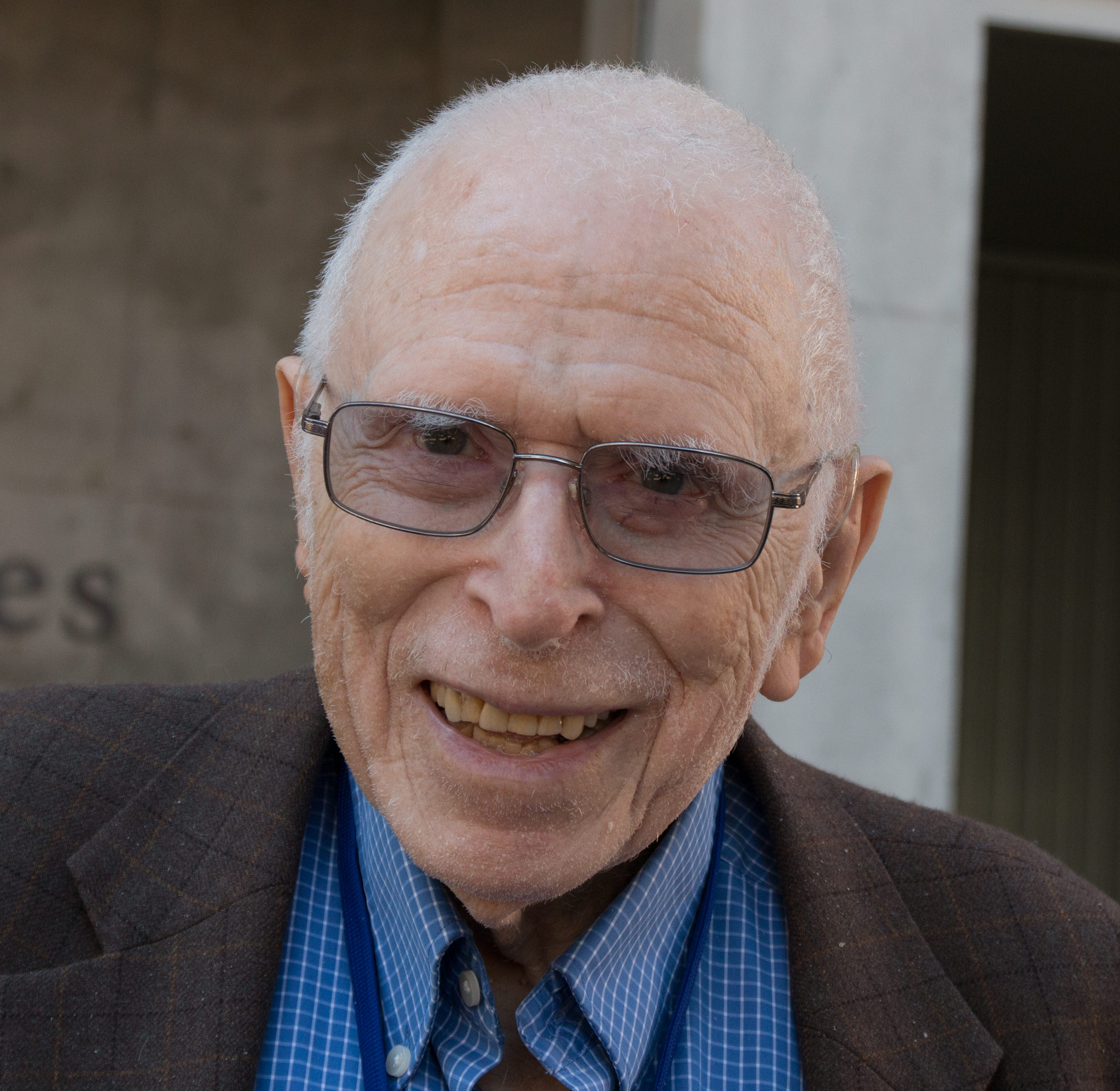by Steven Boggs and Lei Ni

It is with sadness that we confirm the passing of Distinguished Professor Emeritus in the Department of Mathematics Murray Rosenblatt. He died Wednesday, October 9, 2019, at the age of 93.
Rosenblatt was born September 7, 1926, and grew up in New York City. He earned his Bachelor of Science degree from the City College of New York in 1946, and subsequently pursued a PhD in mathematics at Cornell University between 1946 and 1949. As a graduate student, Rosenblatt took classes from and interacted with prominent scientists and mathematicians, including Richard Feynman, Hans Bethe, Philip Morrison, William Feller, and Mark Kac. The lively Cornell probability community surrounding Feller and Kac included recent PhDs, Gilbert Hunt and Kai Lai Chung, and many visitors such as Joseph Doob and Monroe Donsker. Rosenblatt’s dissertation: “On distributions of certain Wiener functionals” was written under the direction of Kac and considered problems related to the now famous Feynman–Kac formula.
After completing his PhD in 1949, Rosenblatt spent one year at Cornell as a postdoctoral fellow, during which time he and Adylin (Ady) Lipson married. The couple moved to Chicago in 1950 where Rosenblatt was an instructor and then assistant professor in the “Committee on Statistics” as it was then called at the University of Chicago. During a visit of Ulf Grenander to Chicago in 1951–52, he and Rosenblatt initiated a short but highly influential collaboration on time series culminating in the book, Statistical Analysis of Stationary Time Series (Wiley, 1957). This book remains a classic today.
Rosenblatt subsequently held appointments at Columbia University, Indiana University and Brown University before joining the nascent Department of Mathematics at the University of California San Diego in 1964. Like other senior faculty recruited to UC San Diego in the early days of the mathematics department such as Errett Bishop, Adriano Garsia, and Ronald Getoor, Rosenblatt remained at the university for the rest of his career. He served as the second department chair after the founder Stefan “Steve” Warschawski and helped shape the department into a first-rate mathematics department. He retired from UC San Diego in 1994 and served as president of the Emeriti Association in 2003. Rosenblatt remained active in research for many years after his retirement with his last paper appearing when he was 89.
For much of his career, Rosenblatt had an interest in applications of mathematics, especially in the physical and earth sciences. He was always eager to discuss mathematics and science with colleagues, even in his final years. In this spirit, in 2016, the Murray and Adylin Rosenblatt Endowed Lecture Series in Applied Mathematics was initiated at UC San Diego featuring expository lectures on mathematics and statistics problems in areas of application.
Rosenblatt was one of the leading figures in probability and statistics in the last half of the 20th century, particularly in the areas of time series, Markov processes, and nonparametric function estimation. Among his many contributions, he conducted seminal work on density estimation, central limit theorems under strong mixing conditions, spectral domain methods, and long memory processes. During his long and distinguished career, he published over 150 papers and five books. The Rosenblatt name has been attached to two notable concepts. The Rosenblatt Transformation, which stems from a 1952 paper with the modest title, “Remarks on a multivariate transformation,” has become a much used procedure for testing goodness of fit for multivariate distributions. In his 1961 paper titled, “Dependence and independence,” Rosenblatt produced a simple time series with long memory that exhibits a noncentral limit theorem in that a non-Gaussian distribution arises as the limit of normalized sums of the dependent random variables in the series. The limit distribution has become known as the Rosenblatt distribution and related long memory limit stochastic processes have been called Rosenblatt processes.
Rosenblatt received many recognitions for his outstanding research. He was a Fellow of the American Association for the Advancement of Science, the American Mathematical Society, the Institute of Mathematical Statistics, the Society for Industrial and Applied Mathematics, a Guggenheim Fellow, an Overseas Fellow of Churchill College, Cambridge UK, and was elected as a member of the National Academy of Sciences. In 1970 he delivered the Wald Lectures, the most prestigious lecture series of the Institute of Mathematical Statistics.
Twenty-two students earned their PhDs under Rosenblatt’s direction — 14 of them were at UC San Diego — and many went on to successful academic careers. One of his former students, Richard Davis, now professor of statistics at Columbia University, recalled recently, “He was there for his students with great encouragement and support. Together, Murray and Ady served as surrogate parents to many of Murray’s students.” Sadly, Ady passed away in 2009. Rosenblatt is survived by his daughter, Karin Rosenblatt of Champaign, Ill., and his son, Daniel Rosenblatt of Live Oak, Tex.
Steven Boggs, who holds the Chancellor’s Chair in Physics, serves as the Dean of Physical Sciences at the University of California, San Diego.
Lei Ni, a member of the Department of Mathematics at the University of California, San Diego, was serving as Chairman of that department at the time of the obituary’s publication.